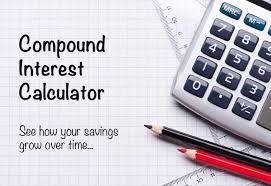Compound Interest Calculator - Calculatorall.com
Use this compound interest calculator for comparing and converting interest rates for different compounding periods. It is more of a converter that tells you how much one compound interest would be equal to in another compound interest option.
What Is Compound Interest?
The term was once described by Albert Einstein as greatest discovery of all times in mathematics. However, there is no rocket science involved in calculating compound interest. It is simply the interest that is earned on original amount as well as existing interest that is accumulated. So, it is different from the regular interest which only applies to original amount. As you are also earning interest on the accrued interest amount, earnings tend to compound with the passage of time and your funds grow exponentially.
Things can, however, get complicated in case if different compounding frequencies are involved. So, to make things easier, this compound interest calculator allows you to make comparisons of different popular frequencies that are used for compounding interest and helps you to visualize how they are different from each other.
Formulas For Compound Interest
Here are the compound interest formulas that are used commonly.
. Basic Compound Interest
The formula for basic compound interest is:
A t = A <0(1+r)n
Here A0 refers to initial investment or principal amount, At refers to amount after a given time t, n is the number of periods for which the interest has to be compounded (usually the number of years), and r is the rate of interest.
If the compounding frequencies represent daily, weekly, or monthly schedules then here is the formula for these.
At = A0 × (1 + r/n)nt
Here A0 refers to initial investment or principal amount, At refers to amount after a given time t, n is the number of periods in the year, t is number of years and r refers to rate of interest.
. Continuous Compound Interest
This interest is accumulated perpetually. It is a representation of mathematical limit which can be reached with the compound interest in a certain time frame. The equation for continuous compound interest is mentioned below:
At = A0ert
Here A0 refers to initial investment or principal amount, At is the amount after given time t, t is number of years, r is rate of interest and e refers to mathematical constant e.
The equation makes use of Euler's constant which is referred to as e. Even though e is used widely in different areas like probability theory as well as Newton's law of heating/cooling, it was first discovered in 1683 by Jacob Bernoulli during his study of compound interest. He came to a conclusion that within particular finite timeframe, involving more compounding periods will result in faster growth of the compounding principal. Now whether these intervals spanned over years, months or days or even hours and minutes, each of these additional periods yielded higher returns. As it's based on same rate of interest which is further divided up, surplus that is derived from every compounding period gets smaller exponentially. Bernoulli came to a conclusion that the sequence snowballed eventually towards a particular limit.
Keep in mind that interest that is earned with the compounding frequencies as they reach higher stages continues to get marginally less.

How This Compound Interest Calculator Works?
As mentioned earlier, there are different compounding frequencies for the calculation of compound interest, this compound interest calculator takes all of them into account. The compound interest calculator works more as a type of converter that tells you what each compounding frequency would yield in another.
The compound interest calculator here gives you an Input interest field where you have to enter the rate of interest and then you have to select how it is compounding. The list for compounding options include Daily, Weekly, Monthly (APR), Quarterly and Annually (APY). Then there is an output interest field which is populated as you hit the calculate button. There is another list of compounding frequencies beside output filed where you can select an appropriate option according to which frequency you'd like to see the compounding interest in. Just hit the calculate button and the compound interest calculator will not just populate the output field but it also shows the result below.
The result shows you the equivalent amount for the compound interest you had entered in your chosen compounding frequency.
So, you can use this compound interest calculator for any such conversions that you want to perform. You can rely on the results shown by the calculator and can use them in whatever application you like.